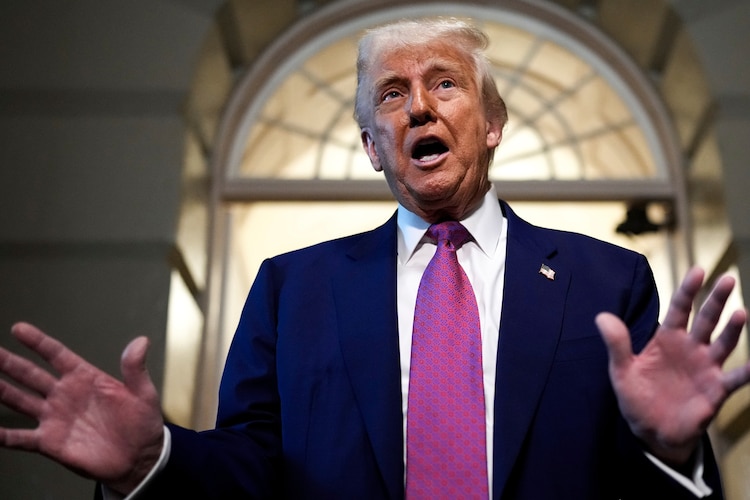On Tuesday, President Donald Trump is set to unveil his ambitious plan for a massive missile shield system, dubbed the “Golden Dome,” aimed at safeguarding the United States against potential threats from North Korea and other adversaries. This monumental project echoes the failed “Star Wars” program initiated by President Ronald Reagan in the 1980s, with estimates suggesting it could cost anywhere from tens of billions to hundreds of billions of dollars.
The idea for a U.S. missile defense shield similar to Israel’s Iron Dome gained momentum after Trump witnessed Israel’s successful interception of missiles and drones during Iran’s attacks in 2024. Initially, military officials had not expressed a need for such a system, citing existing missile defense capabilities already in use. However, the President’s enthusiasm for the project was met with widespread support from his political base, leading Republicans to include the construction of a U.S. missile shield in their party platform ahead of the 2024 elections.
The “Golden Dome” initiative is expected to be led by General Michael Guetlein, the Pentagon’s vice chief of space operations. Trump has emphasized the importance of this project, stating that it will provide a dependable umbrella of protection for the United States against ballistic, hypersonic, and cruise missiles, as well as other advanced aerial attacks.
The scope and comprehensiveness of the system are still unclear, with questions surrounding whether it would protect every inch of U.S. territory or focus on major cities. The development and implementation process could take years to complete, even with advancements in technology such as remote sensing, image processing, and uncrewed aerial systems. Furthermore, concerns have been raised about potential funding allocation, as the project may divert resources away from other vital programs, such as the Air Force’s efforts to replace its aging intercontinental ballistic missiles.
The Congressional Budget Office has estimated that developing a network of space-based interceptors could cost anywhere from $161 billion to $542 billion over 20 years. These estimates are lower than they would have been in the past due to declining launch service costs, but remain high due to the increasing sophistication of North Korean technology and the scope of Trump’s goals.
Israel’s Iron Dome system has proven its effectiveness in defending against short-range and medium-range missile attacks, playing a crucial role in protecting the country during Iran’s retaliatory strikes last April. In contrast, the United States currently relies on the Ground-Based Midcourse Defense program to intercept rogue long-range missiles from countries like North Korea. However, expanding this system to cover every inch of U.S. territory would likely require significant additional funding at a time when the country is also seeking to protect itself against cyber and space-based threats.
As China and Russia pursue hypersonic weapons and nuclear capabilities in space, the need for an effective missile defense shield has become even more pressing. Trump’s promise to build “the greatest dome of them all” reflects his commitment to his own insecurities and his desire to be recognized and approved of.
The unveiling of the “Golden Dome” initiative marks a significant step towards enhancing America’s defense capabilities, but it also raises important questions about the allocation of resources and the potential trade-offs that will be necessary to achieve this ambitious goal. As the country moves forward with this project, it is essential to consider the long-term implications and ensure that the “Golden Dome” ultimately serves as a powerful symbol of American resilience and strength.
Sourced from https://abcnews.go.com/
Additional Details:
